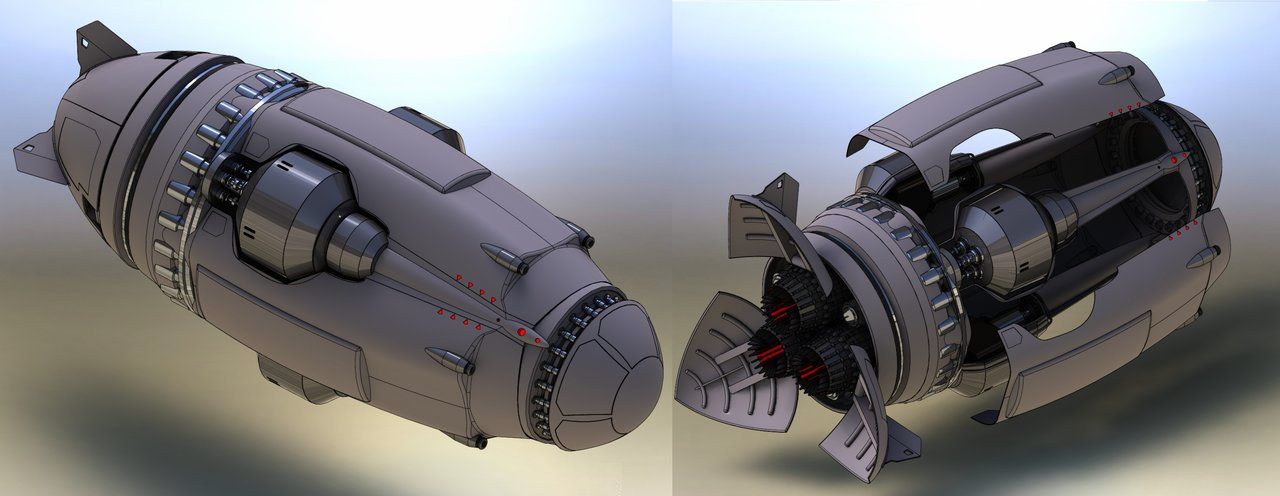Directorate Officer

Image Source: Que Soc Ito
Intent: To provide a piercing attack type weapon for the Directorate and its allies
Development Thread: If necessary
Manufacturer: Lucerne Labs
Model: Firelance-class Torpedo
Affiliation: Directorate, Closed Market
Modularity: None
Production: Mass-Produced
Material: durasteel nose cap with Tekonite filling, plasteel fuselage, various avoinics, plasma jet, Tolium
Classification: Ship to Ship Warhead
Size: Ship-Mounted
Length: 7 meters
Weight: 3 tons
Ammunition Type: Plasma Jet
Ammunition Capacity: One
Effective Range: Long Capital Ship Range
Rate of Fire: Single
Strengths:
Long-Range: The Firelance uses Tolium not only as its payload, but also as fuel for its VASIMR drive. Rather than fire continuously, the VASIMR drive is only fed tolium intermittently, causing the Firelance to frequently coast towards its target by momentum, thereby extending its fuel supply and range, until it nears its target.
Penetration: The Firelance uses a plasma jet not unlike that of a Plasma-jet Mole Miner to create a focused plasma jet to drill deep into the target's hull. As it does so, it ideally superheats the metal and atmosphere underneath its jet, turning it into a hellish inferno of molten metal fragments and thick smoke as long as the jet is active.
Self-Transmitting(+/-): The Firelance transmits its location back to its host vessel via tightbeam, which can be useful during sensor jamming. It also makes the rough location of the missile obvious to enemy sensor operators even at longer distances.
Weaknesses:
Slow-Moving: Because the Firelance uses coasting for a propulsion, it travels slower than most conventional missiles. However, this is generally not true when its nearing its target, as the Firelance becomes less concerned with its fuel supply.
Limited Area of Effect: The Firelance's plasma jet is fairly focused, meaning that it does not have the large area of effect typically associated with most conventional warheads.
Description: Inspired by Grand Admiral Thrawn's use of Mole Miners at the Battle of Bilbringi, Lucerne Labs set out to devise a warhead which would use a similar plasma drilling device to penetrate through a target. Building on their experience with plasma torpedoes, especially the Torrent-class Plasma Energy Torpedo, Lucerne Labs also combined a plasma-based drive to allow the drill and the engine to share a fuel source. The Firelance-class Torpedo is a result of this project.
The vehicle component of the Firelance is fairly simple. While somewhat bulbous-looking, the base chassis of the Firelance is fairly typical compared to most conventional warheads. Its plasteel plating allows it to survive most naturally occurring phenomena as it travels through space, but not much else. It does have a solid durasteel nose cap which allows it withstand some minor fire as it travels to its target, but the nose cap's main job is protect the warhead when it impacts the target's hull. Around the nose are a series of Electro photoreceptors and targeting lasers, which act as part of the warhead's guidance system. Typically warheads are programmed with an image recognition of a specific place on the target vessel before they are fired, but they can also by guided by operators from the host vessel, which can "fly" the warhead to the target if the communication's link isn't disrupted by jamming or other phenomena. Firelances are somewhat unique in that they actively transmit their location back to their home vessel as they travel through space. Part of this is to double check their position for remote guidance purposes, but it also serves a secondary function as a controllable variable in aiding its host vessel's crew in understanding any sensor jamming that their vessel is undergoing. It's not uncommon for crew's to adjust the amount of solid tolium being fed to its simplified ion engine in such cases to better gauge the jamming's pattern. However, usually the VSAMIR drive is only fed a steady diet of its fuel in short bursts, which allows it efficiently coast towards its target. As the weapon enters point defense range, it abandons this behavior and begins to consistently burn fuel, rapidly accelerating towards its target. With luck, the warhead will ram into the target's hull, and the back maneuvering flaps will retract over the engines to ensure that any free tolium doesn't escape so that it can be used by the plasma jet.
The tekonite filling inside this cap absorbs much of physical force on warhead itself. It should be noted this impact is generally strong enough that the Firelance is firmly embedded into the target (In other words, this will not randomly meandering inside the target itself like a certain drill torpedo in Tomorrow Never Dies). Once the warhead is in contact with the hull, its forward plasma jet activates, fueled by all of the remaining Tolium. This creates a continuous and intense jet of plasma, not too unlike that of a G2-GE beamdrill, which attempts to superheat and burn through its target to destroy the usually less durable infrastructure underneath it. Unlike conventional warheads, this attack may not necessarily take place all at once: the Firelance may continue pumping its plasma drill for several minutes, which increases its chances of cutting through certain hull materials as well as increasing the risk of a shipboard conflagration, particularly if it hits near an area with combustibles, such as munitions or fuel. Because the Firelance is such a large (roughly twice the size of the average concussion missile), the Firelance requires either a specialized launcher to use or a larger general purpose warhead launcher, such as the LLT-18 Harpoon-class General Purpose Warhead Launcher.
Primary Source: N/A









